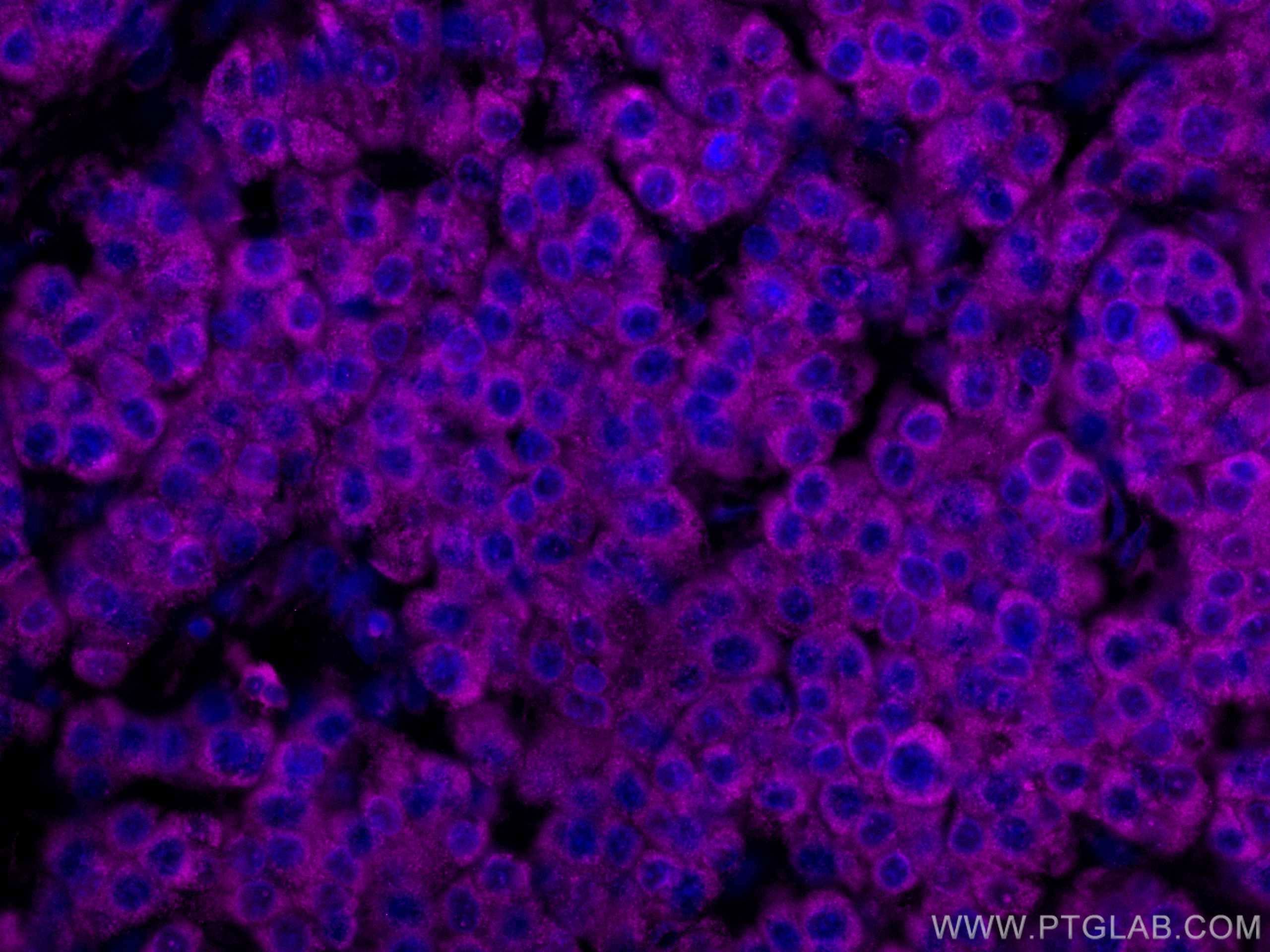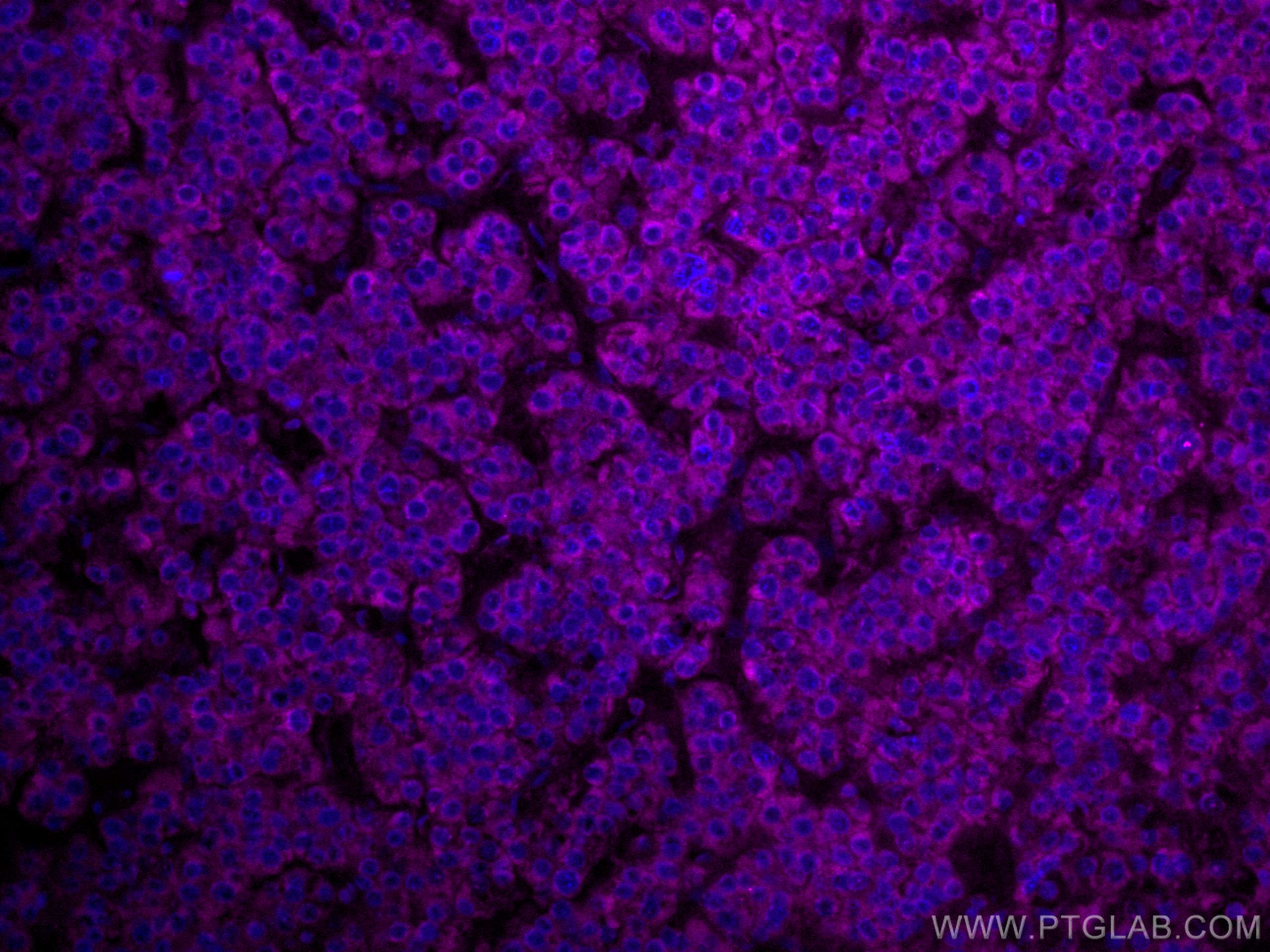SERBP1 Monoklonaler Antikörper
SERBP1 Monoklonal Antikörper für IF-P
Wirt / Isotyp
Maus / IgG1
Getestete Reaktivität
human, Maus, Ratte
Anwendung
IF-P
Konjugation
CoraLite® Plus 647 Fluorescent Dye
CloneNo.
1D4H1
Kat-Nr. : CL647-67792
Synonyme
Geprüfte Anwendungen
| Erfolgreiche Detektion in IF-P | humanes Leberkarzinomgewebe |
Empfohlene Verdünnung
| Anwendung | Verdünnung |
|---|---|
| Immunfluoreszenz (IF)-P | IF-P : 1:50-1:500 |
| It is recommended that this reagent should be titrated in each testing system to obtain optimal results. | |
| Sample-dependent, check data in validation data gallery | |
Produktinformation
CL647-67792 bindet in IF-P SERBP1 und zeigt Reaktivität mit human, Maus, Ratten
| Getestete Reaktivität | human, Maus, Ratte |
| Wirt / Isotyp | Maus / IgG1 |
| Klonalität | Monoklonal |
| Typ | Antikörper |
| Immunogen | SERBP1 fusion protein Ag30202 |
| Vollständiger Name | SERPINE1 mRNA binding protein 1 |
| Berechnetes Molekulargewicht | 45 kDa |
| Beobachtetes Molekulargewicht | 50 kDa |
| GenBank-Zugangsnummer | BC008045 |
| Gene symbol | SERBP1 |
| Gene ID (NCBI) | 26135 |
| Konjugation | CoraLite® Plus 647 Fluorescent Dye |
| Excitation/Emission maxima wavelengths | 654 nm / 674 nm |
| Form | Liquid |
| Reinigungsmethode | Protein-G-Reinigung |
| Lagerungspuffer | PBS with 50% glycerol, 0.05% Proclin300, 0.5% BSA |
| Lagerungsbedingungen | Bei -20°C lagern. Vor Licht schützen. Nach dem Versand ein Jahr stabil. Aliquotieren ist bei -20oC Lagerung nicht notwendig. 20ul Größen enthalten 0,1% BSA. |
Hintergrundinformationen
The plasminogen activator system (PA) plays an important role in invasion and metastasis of solid tumors. The PA Inhibitor type 1 (PAI-1) is the main physiologic regulator of plasminogen activation. PAI-RBP1 (PAI-1 mRNA Binding Protein 1, also named SERBP1), is an RNA-binding protein containing an RG-rich domain and an RGG box domain that might be methylated by protein arginine N-methyltransferases (PRMTs). SERBP1 was identified as an interacting partner of a Tudor domain containing protein TDRD3, and can localize to cytoplasmic stress granules (SGs).
Protokolle
| PRODUKTSPEZIFISCHE PROTOKOLLE | |
|---|---|
| IF protocol for CL Plus 647 SERBP1 antibody CL647-67792 | Protokoll herunterladen |
| STANDARD-PROTOKOLLE | |
|---|---|
| Klicken Sie hier, um unsere Standardprotokolle anzuzeigen |



